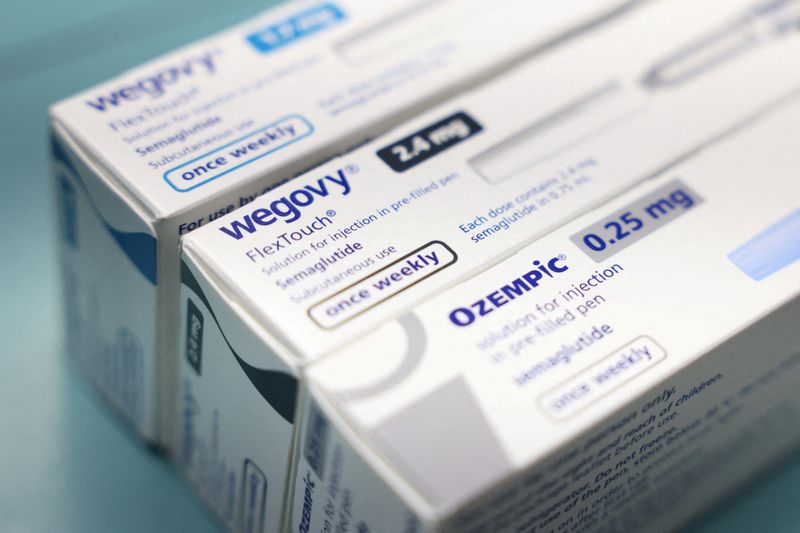Investing.com -- The landscape of GLP-1 drugs, which are widely recognized for their efficacy in weight loss and diabetes management, is poised for a potential transformation in 2025, as per analysts at Barclays (LON:BARC).
These drugs, exemplified by widely-known brands like Novo Nordisk’s Ozempic and Wegovy, are gaining prominence not just for their therapeutic benefits but also for their broader implications across industries, from healthcare to consumer goods.
Barclays says that while the current penetration of GLP-1 drugs in the U.S. remains low, multiple catalysts could dramatically reshape this narrative.
The demand for these medications continues to outstrip supply, but significant developments in production and innovation are on the horizon.
One of the most critical factors identified is the anticipated launch of a next-generation obesity drug, CagriSema, by Novo Nordisk (NYSE:NVO).
This drug, a combination of semaglutide and cagrilintide, aims for an ambitious weight loss target of 25% body weight—a marked improvement over the current generation of GLP-1 drugs, which deliver weight loss in the range of 15-20%.
Barclays estimates CagriSema’s potential peak sales at $49 billion by 2038, significantly surpassing current projections for existing GLP-1 drugs like Wegovy.
Supply constraints have been a persistent challenge in the GLP-1 market. However, Barclays points to recent developments, such as Novo Nordisk’s acquisition of three manufacturing facilities through the Catalent (NYSE:CTLT) deal, which could substantially increase production capacity starting in 2026. This expansion is expected to alleviate supply shortages and boost prescription volumes.
On the regulatory front, uncertainties remain. For instance, the political environment in the U.S., especially under a potential Trump administration, could introduce challenges, including drug price reforms or restrictions on GLP-1 usage.
While the likelihood of immediate regulatory overhauls is low, such possibilities act as an overhang on the market.
Barclays underscores the far-reaching impact of GLP-1 drugs across various sectors. In consumer goods, companies are increasingly tailoring their portfolios to align with evolving consumer behavior driven by GLP-1 usage.
Nestlé, for instance, has launched a dedicated GLP-1 Nutrition Support Platform, offering products designed to complement the dietary needs of individuals on these medications.
Similarly, Danone (EPA:DANO) is well-positioned to benefit, given its emphasis on gut health and protein-rich offerings, which align with the dietary priorities of GLP-1 users.
Retailers, too, are experiencing shifts. Walmart (NYSE:WMT), for example, has seen notable contributions to its sales growth from GLP-1 drug transactions, while packaged food companies are beginning to adapt their strategies to cater to a growing demand for portion-controlled, high-protein, and fiber-rich options.
In the restaurant industry, the narrative is more nuanced. Quick-service restaurants may face less direct impact due to their lower-income consumer base, which is less likely to adopt GLP-1 medications.
Casual dining, however, could be more vulnerable, given its higher-income clientele who might prioritize health-conscious dining options influenced by these drugs.
Barclays projects that the broader adoption of GLP-1 drugs could be driven not only by their weight-loss benefits but also by emerging data supporting their role in treating other conditions, such as Alzheimer’s disease and cardiovascular issues.
Trials like Novo Nordisk’s EVOKE, set to release results in late 2025, could significantly expand the therapeutic scope of these medications.
However, the success of GLP-1 drugs in reshaping industries hinges on overcoming challenges related to affordability, accessibility, and public perception. As production scales and competition within the drug class intensifies, prices may stabilize, creating opportunities for broader adoption.
